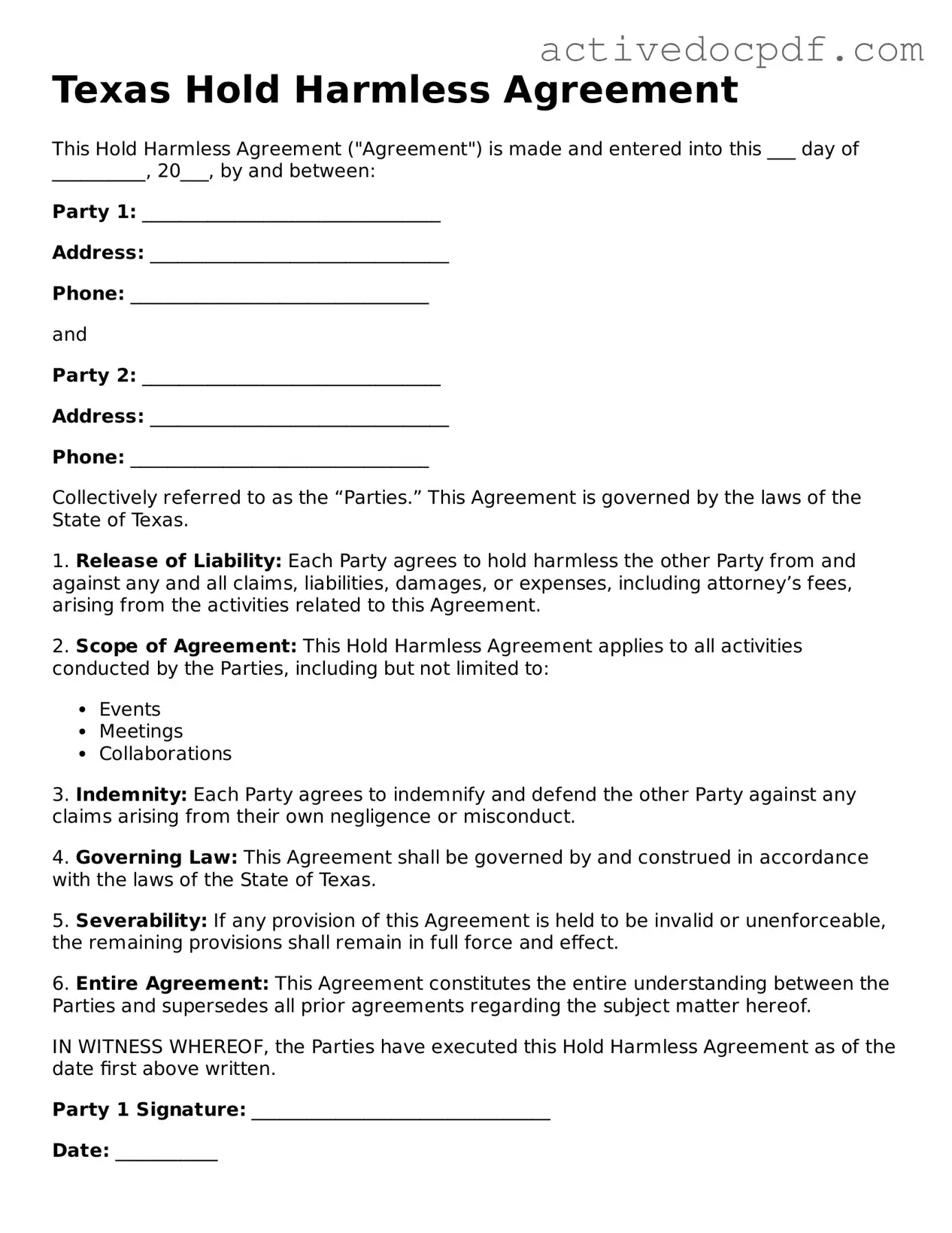What is a Texas Hold Harmless Agreement?
A Texas Hold Harmless Agreement is a legal document that protects one party from liability or claims resulting from the actions or negligence of another party. This agreement is often used in various contexts, such as construction projects, rental agreements, or events, where one party agrees to assume the risk and indemnify the other party against potential legal claims.
Who typically uses a Hold Harmless Agreement?
Various parties may utilize a Hold Harmless Agreement, including:
-
Contractors and subcontractors in construction projects
-
Property owners renting out their property
-
Event organizers and venues
-
Businesses engaging in partnerships or collaborations
Each party may seek to limit their liability and protect their interests through this agreement.
What are the key components of a Hold Harmless Agreement?
A typical Hold Harmless Agreement includes several essential components:
-
Identification of Parties:
Clearly states the parties involved in the agreement.
-
Scope of Indemnification:
Specifies the types of claims or liabilities covered by the agreement.
-
Duration:
Indicates the time period during which the agreement is effective.
-
Signatures:
Requires signatures from all parties to validate the agreement.
These components help ensure clarity and enforceability of the agreement.
Is a Hold Harmless Agreement enforceable in Texas?
Yes, Hold Harmless Agreements are generally enforceable in Texas, provided they meet certain legal requirements. The agreement must be clear, unambiguous, and voluntarily entered into by all parties involved. Courts may review the terms to ensure they are not overly broad or against public policy.
Can a Hold Harmless Agreement be modified or revoked?
Yes, parties can modify or revoke a Hold Harmless Agreement, but such changes must be made in writing and signed by all parties involved. It is essential to clearly outline any modifications to avoid confusion or disputes in the future.
What should one consider before signing a Hold Harmless Agreement?
Before signing a Hold Harmless Agreement, consider the following:
-
Understand the scope of liability you are assuming.
-
Evaluate the potential risks involved in the activity or project.
-
Consult with a legal professional to ensure the terms are fair and reasonable.
-
Ensure that the agreement complies with applicable laws and regulations.
Being informed can help mitigate potential legal issues in the future.
